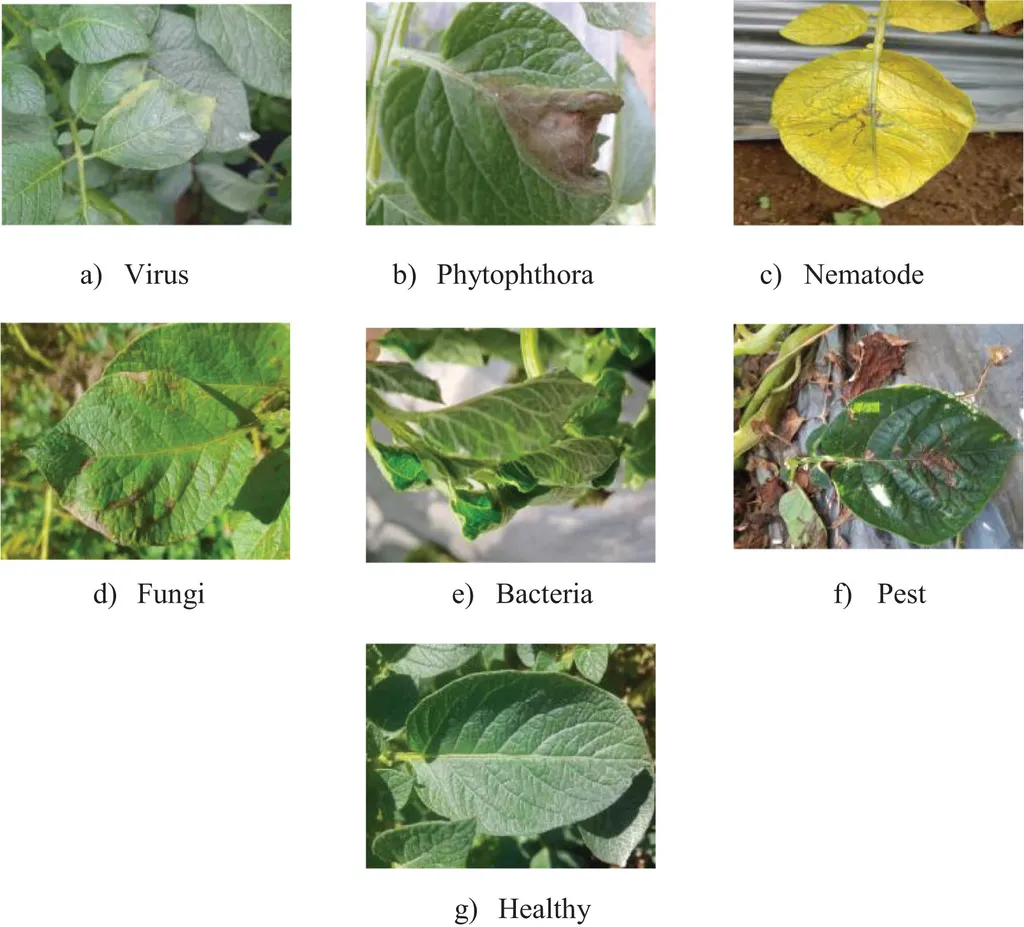In the ever-evolving landscape of agriculture, the battle against plant diseases is a constant challenge, particularly for staple crops like the potato. A recent study published in the journal *Frontiers in Sustainable Food Systems* (which translates to *Frontiers in Sustainable Food Systems* in English) offers a novel approach to assessing and mitigating the risk of infectious and parasitic diseases in potato plants. Led by Alexey Dorokhov, this research presents a quantitative methodology that could revolutionize how farmers and agronomists approach crop protection.
The study focuses on the transmission mechanisms and pathways of various pathogens, including bacteria, viruses, helminths, and fungi. By conducting a point-rating analysis, Dorokhov and his team have developed a flexible system that can adapt to new strains and parasites introduced through global trade. This adaptability is crucial in an era where the movement of goods and people can quickly spread diseases to new regions.
“Our methodology is designed to be dynamic,” Dorokhov explains. “It allows for regular monitoring and data updates, ensuring that we can stay ahead of emerging threats. This is particularly important as new strains adapt to different climatic conditions and chemical protection measures.”
The implications of this research are significant for the agricultural sector. By providing a comprehensive system for monitoring and forecasting the spread of infections, farmers can take timely and effective measures to protect their crops. This proactive approach not only enhances food security but also has economic benefits. Reducing crop losses due to disease can lead to higher yields and better market stability, which is crucial for the commercial viability of potato farming.
Moreover, the study emphasizes the use of optical methods in combination with pathogen data analysis. This integration increases the accuracy of diagnostics and the effectiveness of prevention strategies. “Optical methods, such as remote sensing and imaging, can provide real-time data on crop health,” Dorokhov notes. “When combined with our analytical framework, they offer a powerful tool for early detection and intervention.”
The research highlights the importance of sustainable agriculture practices. By minimizing the use of chemical pesticides and focusing on early detection and prevention, farmers can reduce environmental impact while maintaining productivity. This aligns with the growing global demand for sustainable and eco-friendly agricultural practices.
As the world faces increasing challenges from climate change and global trade, the need for robust and adaptable agricultural systems becomes ever more critical. Dorokhov’s methodology offers a promising solution, one that could shape the future of crop protection and sustainable agriculture. By staying ahead of emerging threats, farmers can ensure the health and productivity of their crops, contributing to a more secure and sustainable food supply.
In the words of Dorokhov, “This is not just about protecting potatoes; it’s about safeguarding our food systems for future generations.” With the publication of this research, the agricultural community has taken a significant step towards achieving that goal.

